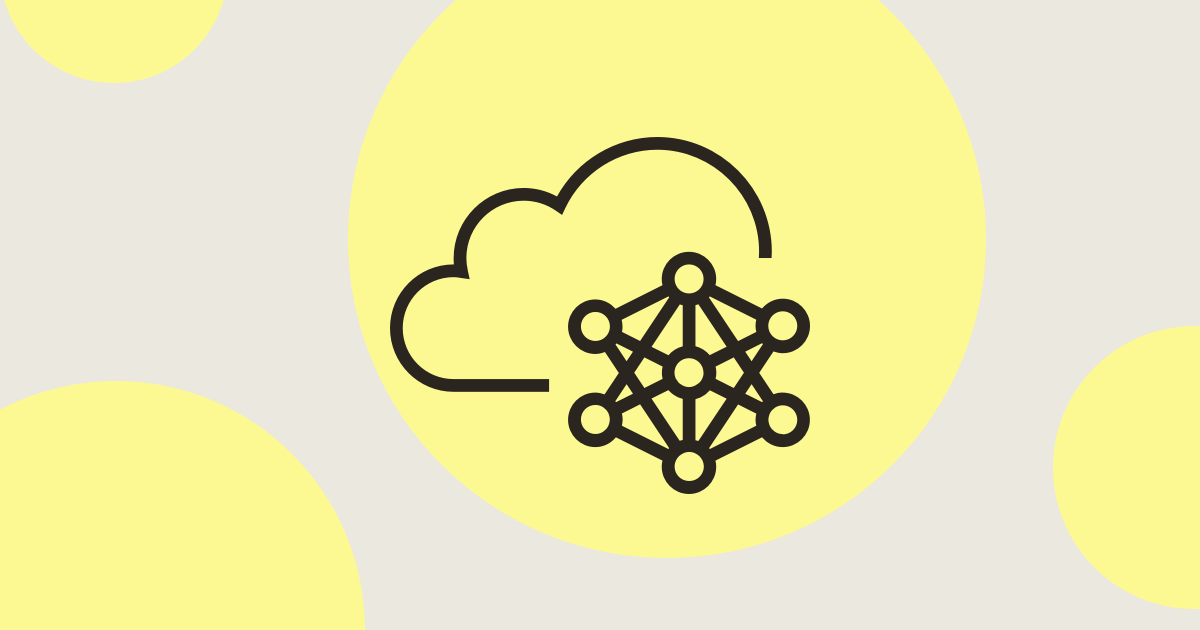Using AI to Supercharge Communication in the Workplace
As OpenAI launched the Generative Pre-trained Transformer 4 (GPT-4) on March 14, 2023, an instant buzz around generative artificial intelligence (AI) took over the world. Even though this was initially limited to paid customers of ChatGPT, it spawned massive curiosity, excitement, and ethical questions across Internet users.
The fact is that generative AI is truly disruptive and has enormous potential to alter communication in the workplace and how business is done. Globally, leaders realize how strategic communication can help build an inclusive workplace, drive employee engagement, and boost organizational productivity and retention. At the same time, its relevance in cultivating lasting bonds with external stakeholders like customers and investors is well understood. In sync with this understanding, a recent Harvard Business Review study confirms that 36% of executives plan to use AI to enhance internal business operations, including engaging with customers and employees. In fact, by now, many have already tinkered with ChatGPT-3 to understand how large language models (LLMs) work. Businesses are also racing to adopt it quickly, albeit haphazardly.
However, leveraging AI effectively to create better content and engage effectively requires a robust strategy. In this blog, we will be looking at ways you can turbocharge your communication in the workplace with the help of generative AI:
Here’s how to use AI to elevate outcomes from communication in the workplace:
Step 1
Step 1: Implement an AI strategy
According to McKinsey, although AI can help you avoid biases and make sense of data, it still isn’t intelligent enough to build a tailor made strategy for you. Therefore, it would help if you did the following:
- Brainstorm and build a cohesive strategy to use AI to navigate your workplace’s communication. You must ensure this plan evolves per the changing environment, how your employees respond to communication, and the impact on their overall productivity.
- Identify the potential content creation and dissemination tasks to automate with the help of AI. This could include personalizing internal communications, creating automated campaigns, streamlining existing and future assignments, and reducing content creation fatigue.
Step 2
Step 2: Familiarize yourself with AI tools
AI tools are quickly evolving, and probably newer tools are being released even as we write this blog. Unfortunately, this constant change is leading to resistance towards AI technology across many, even as it grows relatively more omnipresent. However, as a starting point, here are a few options to experiment with to understand how it works and effectively automate your campaigns:
- ChatGPT is excellent for understanding how generative AI works. You can play around with prompts and know how they work. The longer and more complex your prompts are, the more specific and relevant your results will be.
- Google Bard is free to use and an easily accessible tool. Using it, you enter voice and image input to generate different kinds of content. You can also export generated content into separate files and further fine-tune your content.
- vidIQ can help you create engaging YouTube videos, which can be used for various external and internal communication requirements. You can use this tool to create instructional videos, inform employees about various updates, or connect with them bettet.

Step 3
Step 3: Gear up to automate mundane tasks
Once you are familiar with writing specific prompts and using LLMs, it is time to use this knowledge and new skills.
- Generate first drafts of emails and newsletters to be sent out for external and internal communications.
- Automate social and email campaigns targeted at your employees and customers.
- Implement chat bots where you can, as long as you don't alienate employees and customers.
- Generate reports regarding employee performance and engagement to improve constantly.
Read More: Improving Employee Engagement: Strategies For Communicating Impact To Senior Stakeholders
Step 4
Step 4: Start focusing more on the human touch
Although AI will help you automate various tasks, your communication may seem a bit off if you rely on it entirely. Therefore, it is essential to make sure that you review all communication for humanness before you send it out. In addition, it'll help if you do the following:
- Invest in the free resources and time to build healthy relationships with employees
- Spend more time on employee skills and training
- Encourage employees to engage more internally
Read More: Measuring Employee Engagement: Key Metrics (speakap.com) - Focus on revising content drafts and ensuring they align closely with the target group’s expectations and needs
- As workplaces today are more diverse than ever, encourage and equip your employees with the ability to translate your content into their native languages for better engagement. Speakap, for example, can help you seamlessly translate all communication into employees' preferred languages. Read More: Why Should You Encourage DEI in the Workplace?
These efforts will help you unlock a broader realm of growth possibilities.

Bottom line
Embrace AI, learn, and adapt
Generative AI is rapidly evolving, and adapting to it is essential to ramp up your communications strategy and stay relevant to today’s needs. Although many communicators are concerned about how to use AI ethically, the fact remains that there are broad applications for implementing AI tools. Follow our shared directions to leverage its benefits toward building healthy relationships, ensuring effective employee engagement, and boosting organizational growth.
To learn more about leveraging communication to grow, follow our blog for insights.
Using AI to Supercharge Communication in the Workplace

As OpenAI launched the Generative Pre-trained Transformer 4 (GPT-4) on March 14, 2023, an instant buzz around generative artificial intelligence (AI) took over the world. Even though this was initially limited to paid customers of ChatGPT, it spawned massive curiosity, excitement, and ethical questions across Internet users.
The fact is that generative AI is truly disruptive and has enormous potential to alter communication in the workplace and how business is done. Globally, leaders realize how strategic communication can help build an inclusive workplace, drive employee engagement, and boost organizational productivity and retention. At the same time, its relevance in cultivating lasting bonds with external stakeholders like customers and investors is well understood. In sync with this understanding, a recent Harvard Business Review study confirms that 36% of executives plan to use AI to enhance internal business operations, including engaging with customers and employees. In fact, by now, many have already tinkered with ChatGPT-3 to understand how large language models (LLMs) work. Businesses are also racing to adopt it quickly, albeit haphazardly.
However, leveraging AI effectively to create better content and engage effectively requires a robust strategy. In this blog, we will be looking at ways you can turbocharge your communication in the workplace with the help of generative AI:
Here’s how to use AI to elevate outcomes from communication in the workplace:
Step 1
Step 1: Implement an AI strategy
According to McKinsey, although AI can help you avoid biases and make sense of data, it still isn’t intelligent enough to build a tailor made strategy for you. Therefore, it would help if you did the following:
- Brainstorm and build a cohesive strategy to use AI to navigate your workplace’s communication. You must ensure this plan evolves per the changing environment, how your employees respond to communication, and the impact on their overall productivity.
- Identify the potential content creation and dissemination tasks to automate with the help of AI. This could include personalizing internal communications, creating automated campaigns, streamlining existing and future assignments, and reducing content creation fatigue.
Step 2
Step 2: Familiarize yourself with AI tools
AI tools are quickly evolving, and probably newer tools are being released even as we write this blog. Unfortunately, this constant change is leading to resistance towards AI technology across many, even as it grows relatively more omnipresent. However, as a starting point, here are a few options to experiment with to understand how it works and effectively automate your campaigns:
- ChatGPT is excellent for understanding how generative AI works. You can play around with prompts and know how they work. The longer and more complex your prompts are, the more specific and relevant your results will be.
- Google Bard is free to use and an easily accessible tool. Using it, you enter voice and image input to generate different kinds of content. You can also export generated content into separate files and further fine-tune your content.
- vidIQ can help you create engaging YouTube videos, which can be used for various external and internal communication requirements. You can use this tool to create instructional videos, inform employees about various updates, or connect with them bettet.

Step 3
Step 3: Gear up to automate mundane tasks
Once you are familiar with writing specific prompts and using LLMs, it is time to use this knowledge and new skills.
- Generate first drafts of emails and newsletters to be sent out for external and internal communications.
- Automate social and email campaigns targeted at your employees and customers.
- Implement chat bots where you can, as long as you don't alienate employees and customers.
- Generate reports regarding employee performance and engagement to improve constantly.
Read More: Improving Employee Engagement: Strategies For Communicating Impact To Senior Stakeholders
Step 4
Step 4: Start focusing more on the human touch
Although AI will help you automate various tasks, your communication may seem a bit off if you rely on it entirely. Therefore, it is essential to make sure that you review all communication for humanness before you send it out. In addition, it'll help if you do the following:
- Invest in the free resources and time to build healthy relationships with employees
- Spend more time on employee skills and training
- Encourage employees to engage more internally
Read More: Measuring Employee Engagement: Key Metrics (speakap.com) - Focus on revising content drafts and ensuring they align closely with the target group’s expectations and needs
- As workplaces today are more diverse than ever, encourage and equip your employees with the ability to translate your content into their native languages for better engagement. Speakap, for example, can help you seamlessly translate all communication into employees' preferred languages. Read More: Why Should You Encourage DEI in the Workplace?
These efforts will help you unlock a broader realm of growth possibilities.

Bottom line
Embrace AI, learn, and adapt
Generative AI is rapidly evolving, and adapting to it is essential to ramp up your communications strategy and stay relevant to today’s needs. Although many communicators are concerned about how to use AI ethically, the fact remains that there are broad applications for implementing AI tools. Follow our shared directions to leverage its benefits toward building healthy relationships, ensuring effective employee engagement, and boosting organizational growth.
To learn more about leveraging communication to grow, follow our blog for insights.
Stay updated with the latest insights and trends delivered straight to your inbox.





.webp)





